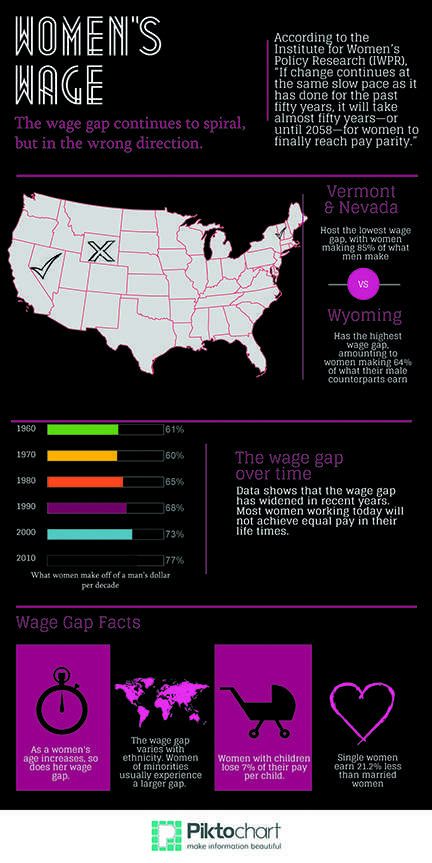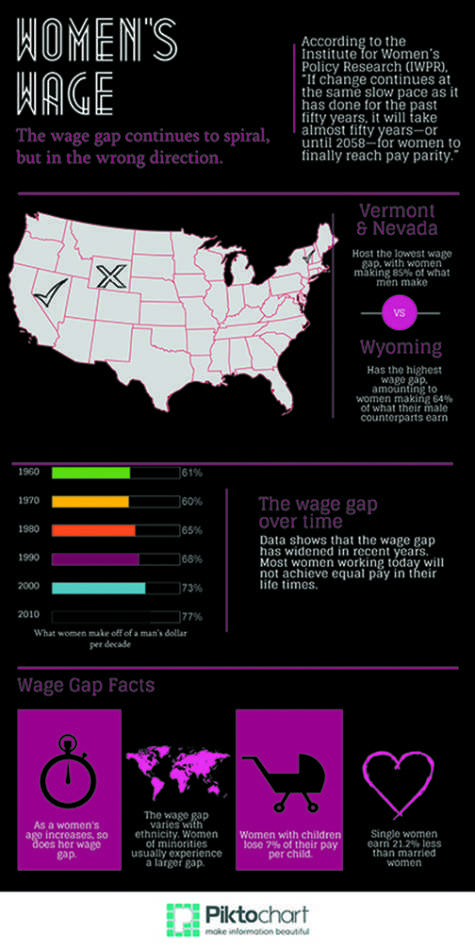Cutting it short: Women’s wage gap
April 11, 2014
The modern woman balances both work and home, balancing two lives daily. She drops the kids off at school, spends a day in the office and still makes sure something is ready for dinner. She works equally as hard as her male counterpart, if not harder.
But according to a study conducted in 2012, most women make 77 cents for every dollar their male counterpart makes, amounting to a wage gap of 23 percent.
Today women are the main breadwinners in 50 percent of households and acquire more college and graduate degrees than men. They have become half of the workforce, working in every industry imaginable and holding top level
positions, yet nearly a century after women were given suffrage, they are still paid less than men for doing the same amount of work and are subject to
gender discrimination in the workplace.
The problem lies not in the fact that women are working less hours or less demanding jobs than men, but simply due to occupational separation and lack of gender integration in the workplace.
Women are seen as subservient to men in the workplace, even women who hold high positions such as CEOs in companies are treated as less successful than their male counterparts, despite having to work through extra obstacles to reach their positions.
Even jobs that require high qualification but are done predominantly by women have a smaller salary than jobs usually done by men.
In order to eliminate the wage gap a variety of
factors have to come together.
Firstly, women must be taken seriously when considered for high level positions. Employers have a tendency to designate women to lower level positions, even when they have the same qualifications and experience as male counterparts.Women make, on average, $4,600 less for the
same first job as a man.
Salary secrecy also contributes to the wage gap, as most women do not know that they are being cheated out of their wages.
Lastly, legislation must be passed for paid family leave for women and affordable childcare must be made more readily available. Even with both parents working, child care becomes too costly in comparison to salary. Paid family leave is lower and more rare in America in comparison to other developed countries with a large female workforce, making it hard for women to balance work and home, consequently making it harder for them to advance in the workplace and achieve higher wages.
The fact that nearly a century after women gained the right to vote they are still not considered equal and worthy of the same pay in the workplace reveals that when it comes to the fight for women’s rights we have come far, but not
far enough.



